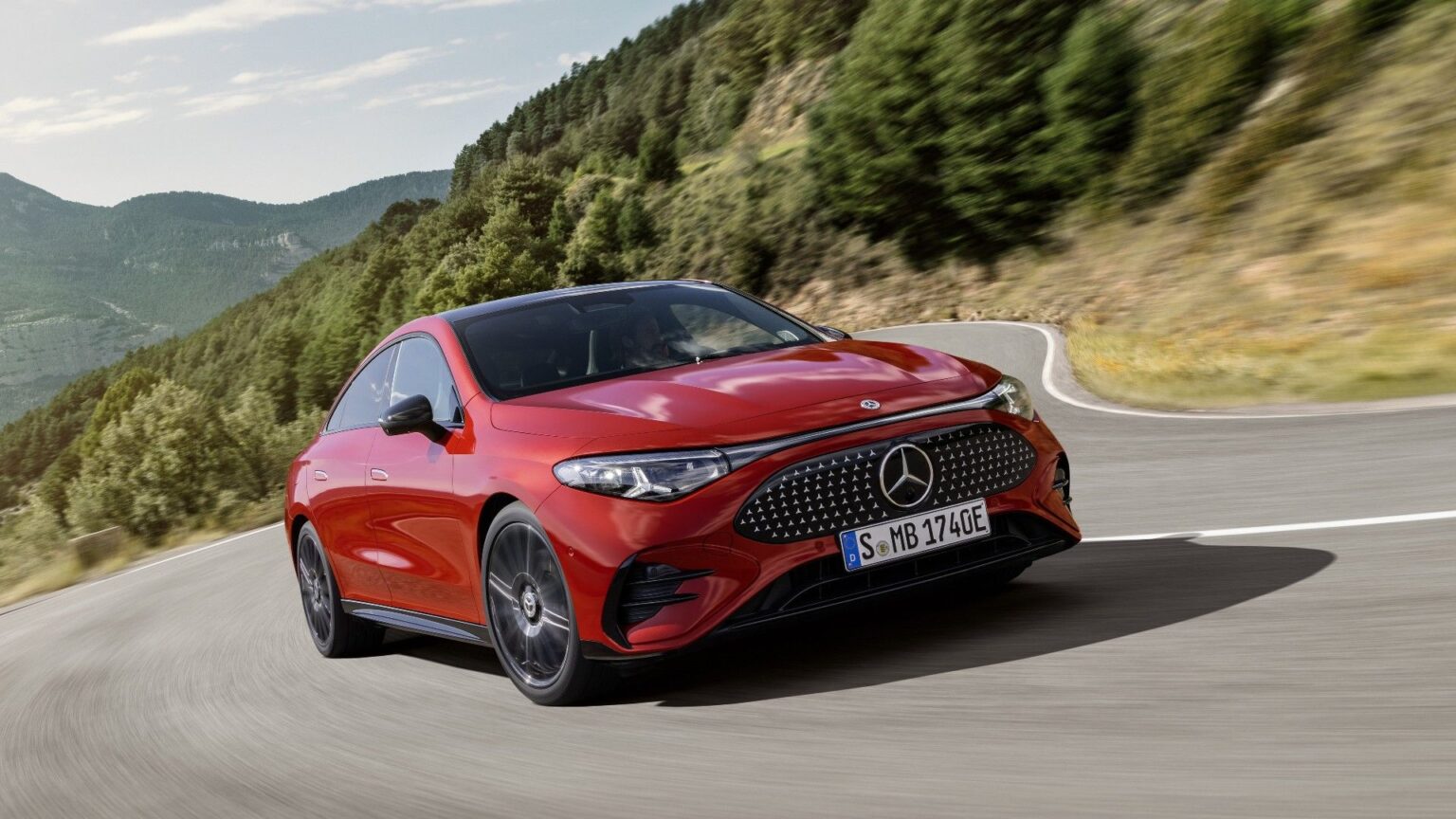Mercedes-Benz backed off its bold electric vehicle strategy in 2024. Instead of aiming for 100 percent EVs by 2030, the brand moved the target to achieving a 50/50 split between electric and combustion/hybrids. Mercedes will continue ICE engine development into the 2030s. And that development will include a new V8 engine, though not for the Mercedes-AMG C 63.
Committing to a continued ICE future does not mean Mercedes has abandoned sustainability. During the brand’s Sustainability Update 2025 presentation, Mercedes-Benz set benchmarks for improving sustainability and reducing emissions in several key areas.
Key Takeaways
- Mercedes backed off plans to go 100 percent EV by 2030
- But the brand is still focusing on cutting total emissions 60 percent by 2039
- Mercedes’s sustainability approach will focus on six strategic areas: decarbonization, resource use and circularity, human rights, traffic safety, digital trust, and people
- The new CLA reduced production emissions by 15 percent over the previous model
- It also looks far better than previous Mercedes EVs, which should help its cause
Mercedes-Benz Spelled Out Six Sustainability Focus Areas
Mercedes executives spelled out six sustainability focus areas: decarbonization, resource use and circularity, human rights, traffic safety, digital trust, and people. The brand also offered some high-level targets, including a 50 percent reduction in value-chain carbon dioxide emissions per vehicle (against 2020) and a 60 percent reduction in total emissions (against 2021) by 2039. Mercedes currently produces 50 percent of its plant power with renewable energy and plans to shift that to 80 percent by 2030. Mercedes is also 65 percent of the way through vetting its raw material suppliers for “human rights and environmental risks.”
The New CLA Is More Than The Most Efficient Mercedes Ever Built
The new CLA EV will be the most efficient Mercedes car ever built, packing a range north of 400 miles. But that’s only part of the efficiency story. Despite offering ICE, hybrid, and all-electric powertrains, Mercedes reduced emissions during the car’s production by 15 percent compared to the outgoing model. Much of that was the CLA’s Ratstatt production plant moving to “100 percent green energy” through external suppliers and onsite solar.
TopSpeed’s Take
Automakers made bold claims early this decade when the EV growth curve looked exponential. That curve has flattened. Shareholder concerns shifted from potential to profitability. It’s unsurprising that Mercedes-Benz and nearly every other automaker have backed off going 100 percent electric. Mercedes needs to build vehicles that customers want to buy.
Production and supply chain efficiencies are an essential part of sustainability. The net benefit of EVs having zero tailpipe emissions diminishes when you factor in things like wasteful and carbon-intensive battery production. But that should be relatively low-hanging fruit compared to weaning AMG buyers off V8 engines. Production efficiency may improve dramatically without active Mercedes involvement from advancements and cost reductions in renewable energy from power grids.
Tailpipe emissions remain essential for reducing Mercedes’s overall environmental impact. And the new CLA, looking more like a combustion Mercedes-Benz than the brand’s previous EV efforts, should play a big role.
Read the full article here


